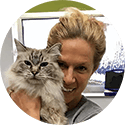22 Apr 2022
Employee engagement forms part three of our series exploring six core dynamics shaping the veterinary profession today and in the future.

 Almost five years ago the Big 6 project broke new ground with a series of hard-hitting articles focused on the six core dynamics shaping the veterinary profession at that time.
Almost five years ago the Big 6 project broke new ground with a series of hard-hitting articles focused on the six core dynamics shaping the veterinary profession at that time.
Now, Big 6 is back, with a series of in-depth features and long-form podcasts to bring Vet Times readers exclusive insights and analysis about the dynamics driving the sector today, and in the future…

Since the turn of the century, the veterinary profession has been shaped and remodelled by the irresistible impact of many powerful dynamics. Some of these dynamics have brought – and continue to bring – unwanted change and disruption; others have delivered opportunities for innovation and evolution within the sector.
The coronavirus pandemic has accelerated many of these forces of change, with COVID-19 compelling practices and their people to respond in ways that have not only highlighted and exacerbated existing problems, but also pointed towards new possibilities and potentialities.
It is against this backdrop that Vet Times has rebooted the Big 6 project – an expert discussion forum that broke new ground when results were first published five years ago in sister title VBJ.
The premise of the project is to put six core areas of the profession under the spotlight to examine some of the driving forces shaping modern veterinary practice.
Our ambition across this monthly article and podcast series is to not only provide an insight into how things currently stand, but also produce a road map for the future.
To help us achieve that ambitious goal, Vet Times has been hosting a series of expert forum discussions featuring vets, business leaders, and key opinion leaders from both inside and outside the sector.
Having started with the subjects of transformational technology and client care, the series will go on to cover operational opportunities, and finance and regulation, before finishing with a deep dive into the short and long-term impacts of COVID-19.
For the third article in the Big 6 series, we invited former RCVS president and IVC chief medical officer Amanda Boag; Vets4Pets people director Gordon Dunn; VMG senior vice president Rich Casey; business consultant Alan Robinson; SPVS board member and consultant Peter Orpin; co-founder of WellVet and the Vet Mums group Liz Barton; and practice owners Lorna Clark and Cees Bennett to debate some of the key dynamics around employee engagement.
While many areas and topics were debated during the course of our latest live forum – which is also available in full as a podcast – the discussion has been grouped under five main headings: pay and conditions, leading culture change, flexible thinking, female leadership and the next generation…
 Cees Bennett
Cees BennettA former director at CVS, Cees is now co-owner of Belvoir Vets in Lincolnshire and a RCVS Practice Standards Scheme assessor.
 Liz Barton
Liz BartonA vet who co-founded WellVet and the Vet Mums group, Liz now works as head of communications at VetCT.
 Amanda Boag
Amanda BoagAmanda is IVC Evidensia chief medical officer, former president of the RCVS, and founding president of the European College of Veterinary Emergency and Critical Care.
 Alan Robinson
Alan RobinsonA vet who owned a successful mixed practice for more than 20 years, Alan is now a director of Vet Dynamics, an independent business consultancy providing tailored resources for practice performance, business intelligence, team engagement, and leadership and culture.
 Peter Orpin
Peter OrpinPeter worked as a vet for the Park Vet Group for 35 years, and is now veterinary business consultant with Anval, and board member and COVID lead for SPVS.
 Lorna Clark
Lorna ClarkLorna is a practising vet, author and practice owner of Pinfold Vets in Leicestershire, which was recently named Petplan’s Practice of the Year.
 Rich Casey
Rich CaseyRich worked in HR and people development before joining PDSA in 2011 to work on a range of operational and people projects. He then joined Blue Cross in 2016 as clinical development manager, and in this role he oversees the development of veterinary services and manages partnerships with private veterinary practices. Rich is also president of the Veterinary Management Group.
 Gordon Dunn
Gordon DunnGordon is an HR director with experience across various sectors including retail, financial services, health care and the veterinary sector. He is now director of people at Vets4Pets.
Image © Guitafotostudio / Adobe Stock
Recruitment and retention have become the two towering issues facing the veterinary profession during the past decade.
The symptoms are easy to identify: too few vets and nurses struggling to cope with seemingly ever-increasing demand in a working environment often characterised by high burnout rates and relatively low levels of satisfaction – Brexit and the coronavirus pandemic have merely added fuel to the fire.
Solutions to these complex and multifactorial problems are harder to find, but members of our panel did their best and, as Liz Barton explained, well-being is as good a place as any to start.
She said: “I think acknowledging the importance of well-being is really important, and starting to put some things in place and have it as a valid conversation; five or six years ago it was barely mentioned in veterinary conferences and now, there’s normally at least one well-being stream.
“In terms of it actually filtering down into practices, we’ve seen some great examples, like the SPVS-Mind Matters Vet Well-being awards and other initiatives, and we are starting to see practices actually actioning these things on a very practical level, but it is still patchy and it takes time.
She added: “When it comes to pay, while it is less important than belonging and career/self development, I think we need to be more transparent generally, and specifically do more to address the yawning gender pay gap that has made no progress at all in closing in the past decade. In many sectors it has widened during COVID.”
The point was backed up by the latest SPVS salary survey, which showed men in the veterinary profession now earn roughly 21% more than women – up from 15% in the previous survey.
This statistic suggests women bore the brunt of childcare duties during the various lockdowns, leading to a reduction in hours worked, but other areas of concern were less gender-specific.
Peter Orpin said: “The survey is something we do every year, and I think it is important to appreciate that pay is only part of the issue – there were many people actually in the survey who said they were happy with their work and content, but there are a number of people who are not. And the area that came out which interests me most was about a third of the vets didn’t really see a positive prospect for their career. And that’s something which is quite concerning.
“So, if we have a situation where people don’t see a future then that has inevitable consequences in terms of their view of what they should do and whether they should stay within the profession.”
Aside from a growing number of respondents reporting a less than positive outlook for their career, another trend identified by SPVS’ latest survey was that many new graduates are choosing to work less hours; a point picked up on by Vets4Pets director of people Gordon Dunn.
“We have definitely seen a trend of people wanting to work less hours, not just vets entering the profession, but much more generally,” he said.
“If I go back two years ago, on average, a vet working with us was doing 34 hours a week. That’s gone down to 32 hours over the past couple of years. And I think that’s probably a general trend that’s happening across the whole profession.”
For Rich Casey, some of this change has come as a result of expectations within the veterinary profession finally catching up with other sectors.
He said: “When I joined this sector 10 years ago, I would say employee expectations just weren’t necessarily as prevalent in the veterinary world as they were in other sectors. And I think that just comes down to how things are done around you.
“And as more generations have come through, and as more conversations are occurring around the good and the bad, people are becoming more comfortable talking about what is and isn’t acceptable.
“This had led to this cross-fertilisation of ideas and meant employee needs and employee benefits have started to come to the fore a lot more: ‘Well, why hasn’t that been offered as part of my benefit package when in other industries that could be a standard thing that’s been around for years, if not decades’.”
“A third of the vets didn’t really see a positive prospect for their career. And that’s something which is quite concerning.”
Peter Orpin
Image © Southworks / Adobe Stock
Workplace culture was identified by the Big 6 panel as one of the areas that had improved in recent years, but there was a clear consensus that there is still much work needed to be done across the sector.
Amanda Boag said: “When I graduated, we didn’t even learn any communication skills and that is so important across so many areas. We weren’t aware of the importance of teamwork. I think we were very aware of the importance of our nursing colleagues as a profession, but it wasn’t highlighted as much as it is now in terms of nurses having an equal professional footing to us.
“So, I think there has been a huge shift from thinking purely as the vets delivering the clinical care to delivering it within that whole team framework and the importance of leadership skills within that. Still, I think it is patchy across the profession.
“I think as Liz said, it is brilliant that things like well-being and teamwork and leadership are now becoming a valid part of veterinary professionals’ – vets’ or nurses’ – career development. But we are still quite early on in that, so I think practice culture is evolving all of the time. We’re getting much better at recognising it and I think we’re becoming much better at recognising as a profession that we have an active role to play in creating really positive workplace culture.”
Not everyone on the panel agreed about the significance of the steps that have been taken when it comes to improving practice culture, however.
Alan Robinson said: “To be honest, I don’t see that the culture, the way we work, the built environment, the psychological levels or anything else has changed that much. It’s slowly starting to. People are talking about it a lot, but the actual on-the-ground graduates coming into practices are very much going into the very same practices they went in 20, 30, 40 years ago, in many cases. So, what we’ve got is a Generation Z/millennial world of expectations that is very different from baby boomer, Generation X expectations – so, it’s a generational shift.
“But as a profession, I don’t think we have shifted very much on our organisational skills, our psychological skills, our communication skills – the built environment hasn’t shifted.
“The fact that if we’re not busy, we’re not successful is kind of the mindset, but the interesting thing was in COVID we saw practices cut their hours right back as they were down to half teams. They were working hard for sure, but they were becoming really very efficient. They were delegating work. And they developed a pretty good model in that.”
As a practice owner and RCVS Practice Standards Scheme assessor, of the panel members Cees Bennett was uniquely placed to offer his insights in this area.
“I think what I found most interesting is that going into practices as an assessor, I am able to pick up the culture of a practice often within 10 minutes of being there,” he said.
“You know the practice where people are happy and they’re thriving, and then it comes down to trying to define what are those things underneath it. Now, often, that’s maybe not for the practice standards to define what makes them happy, but you can start to pick it up through the way that the people in the team have got empowerment. They feel value in each of the things they’re doing and often the whole team is getting what they’re told they’re going to get, both in terms of the type of role they’ve actually gone in for, the hours they’re actually going in for, the responsibilities they’re going to get, the recompense they’re going to get. And I think there’s a lot of, actually, getting the job that they think they’re going to get is something which doesn’t always happen.
“Unfortunately, there is often a culture of acceptance that we get a lot in the veterinary profession because people have got a lot of good will.”
Gordon added: “I don’t think you can separate culture from leadership. And what struck me when Cees was talking was, he was talking about the culture in his practice, but also talking about how he has caught that as a leader, which I thought was really powerful. And I bet you that in the practices you go into, that have got a great culture, it’s fundamentally because they’ve got great leadership in place. And I think that has to be a real focus for us going forward, the capability of our leaders.”
For Liz, it is incumbent on those leaders to create a supportive sense of community in practices that had been lost in recent years.
She said: “I think we’ve lost a lot of sense of community through COVID and even though teams were working well together that wasn’t necessarily being realised in positive well-being outcomes because we did have a breakdown of community generally within veterinary practices. And particularly with the Gen Z-ers coming through more than ever, they’re looking for a sense of community and belonging in their workplaces, where life in general is moving more online, and we’re sort of staying in the communities that we had in society that are not strong anymore. We need positive, supportive workplace communities that people can feel part of.”
On this point, Rich added: “Sometimes, we just need to be comfortable with listening and letting that individual know: ‘You’re in a safe environment here. I can’t give you a solution, but I can just listen and we can work a way forward together’.”
“I don’t see that the culture, the way we work, the built environment, the psychological levels or anything else has changed that much.”
Alan Robinson
Image © PiyanatBoon / Adobe Stock
Another area the Big 6 panel was in agreement on was the importance of more flexible working structures to meet the needs of the modern veterinary workforce.
Cees said: “We opened Belvoir Vets with the plan of being open to everyone who might be able to work here; so that might be those who just needed to do a little bit of work, stay in contact as a vet or doing 40 hours a week if they really want to.
“So, yes, flexible working is important to some people. Salary is important to some people. And I think we have got to be really clear that everyone has a different thing that is important to them. Our attitude is very much: ‘We know roughly how many vet heads we need for the amount of clients we have and the turnover we have’. Say we want four vets in total, that might involve actually having seven, eight, nine individuals in building that overall picture.
“The only thing we do say to everyone, and this is the expectation management, is we want everyone to flex a little bit. Because if everyone flexes just a little bit, then no one has to flex a huge amount.”
Amanda added: “I completely agree. And I think it’s about everybody feeling that they’re listened to, in terms of their priorities, and then they’re more likely to flex. And that’s about creating that culture where people feel safe to say: ‘Actually, I want to have Tuesday evening off because I go and do X’, even if they might not necessarily want to share what is. They’ve got to be able to feel that they can say that to you, and you get that give and take, because to this point, rotas are really challenging and they do require that back and forth. I think local leaders are so much more likely to be successful when everybody feels genuinely listened to and that they can express what they need and feel good about that.”
According to Alan, some of the sector’s recruitment and retention issues could and should be solved with a more open-minded and flexible approach to team building.
He said: We’re recruiting for Garden Vets [Harper Keele University] and it is a big challenge, but what we know is there’s a huge reservoir of talent out there – there’s people who have chronic illnesses, and where practice is just not accommodating their time and their capabilities and what they can do. There’s a huge number of those.
“There’s, to put it bluntly, a huge draft of semi, peri-menopausal women out there who just don’t find the working conditions as suitable for their needs as well. And then there’s all the mums who have gone off, gone in maternity, got out of practice of being in practice and are just so nervous about stepping back into that arena. And if practices could find some learning capabilities so that we can ease those people in, we suddenly have a much better situation.”
Developing this theme, Liz added: “I actually did an SPVS veterinary women menopause report and the findings were that menopause does impact 75% of women for a decade. And there are some very practical, very straightforward things that can be done. The BMA [British Medical Association] came out with a series of recommendations; everything from simply having decent air conditioning to factoring in one or two additional breaks in the day that would really help retain and enable those people to stay in the profession that very often they want to stay in and they love.
“If we can just get on board as a profession, not just with what’s happening but maybe even lead the way into facilitating these people, a hugely talented and experienced pool of women, to facilitate their careers being longer and more fruitful. And I think that would be hugely positive step.”
“[We] are so much more likely to be successful when everybody feels genuinely listened to and that they can express what they need.”
Amanda Boag
Image © Monkey Business / Adobe Stock
With more than 80% of new veterinary graduates being female, the need to develop structures and support that allows more women to ascend into positions of leadership has become absolutely crucial for the sector.
But with men still twice as likely than women to occupy leadership positions, Amanda and Liz both highlighted the size of this particular challenge.
Amanda said: “We can’t take away from the fact that we’ve all grown up in a society where there is systematic bias and there’s good evidence of that across a number of different professions, and the BVA did some excellent work with the University of Exeter a couple of years ago that showed this bias at work in our profession.
“We’ve actually got to consciously recognise that, and consciously take steps to address it, whether that is a mixture of training and support and mentoring to bring younger women through, or whether it’s making sure we create that psychologically safe environment where a woman who is coming back to work having had children, and going through menopause, feels that they can genuinely talk about what they need to make it work, rather than feeling that they can’t express what they need and taking the easier option, which is just to drop out of the workforce, as we see so often.”
Liz added: “We could keep coming back to the BVA work that was highlighted in that it showed there is a perception that men are automatically perceived as being better in leadership roles.
“So, I think there is a lot around training and a lot around personal development, and I think there’s huge value in doing things like personality profiling to understand your preferences and where your strengths lie, and then looking at how we can optimise those, as Amanda very rightly says.
“So it’s about optimising your potential, maximising your potential and having different or alternative routes into leadership roles.”
However, Lorna Clark made the point that finding sufficient numbers of women willing to take on leadership positions is not going to be easy.
She said: “I think we definitely have to support people who do want to come through and become leaders – when I have students in practice, I say to them that owning a practice has been great for me, because it’s given me flexibility – but at the same time they have got to want to do it. I think a lot of people, particularly women, have different priorities. Some people don’t want to go back to those [leadership] roles. I don’t think we’ve got to be scared about saying that.
“I think it’s fine if you don’t, but I don’t think we can expect as many female leaders to come through into those roles because I’m not sure there’s going to be a vast cohort who want it – and I know that’s quite a controversial thing to say.”
Gordon added: “I think it’s really important that there are role models that people can aspire to and learn from. And I think one sort of encouraging data point I think is that more than half of our JVPs are women. And so last time I looked, I think it was 52% of our JVPs are women, many of whom worked part time, have families and so forth. So, I think it’s really important to showcase and role model how it can be done.”
Peter said: “I mean I think it’s a really interesting area this whole area of female leadership. I helped a young team of women become leaders within our practice and when I left practice, it was a predominantly female leadership team and the best for it.
“And so, we made better management decisions and they were more considered, and I was very pleased with the work they did. But the journey to get people to that position was a hard journey. There was a lot of support required to give people the encouragement that you can do it, because quite often, there’s a lack of network there that’s been highlighted.
“Sometimes, it’s inherent lack of self-belief that can come from the fact there’s been gaps in the career, or whatever. And there’s this battle between the clinical work and the leadership work that seems to always get in the way. But I think, given the right support, it is eminently achievable.”
“Some people don’t want to go back to those [leadership] roles. I don’t think we’ve got to be scared about saying that.”
Lorna Clark
Image © Flamingo images / Adobe Stock
One of the biggest areas of debate in the latest forum revolved around the next generation of vets coming through – with the concern being that the profession has not evolved fast enough to provide the kind of working environments and careers that the younger cohorts are looking for.
Liz said: “My worry is that the pace of generational change is going to out-strip what we’re doing in the profession and, for example, Gen Z-ers are two to three times more likely than any other generation to have suicidal ideation. Now, is that as a result of the COVID pandemic? Is that as a result of social media? This is not just veterinary. This is a kind of generational shift.
“It’s not because they’re snowflakes. It’s because, I think, their brains are overloaded in a way that they never have been before. And we need to take this really seriously and maybe overstep the mark in terms of how we support these people and their transition.”
Cees added: “We all see a lot of comments about the fact that the people we’re selecting are not used to failing, and then they can’t cope when they come into the real world. Does that mean we’re going to try to actively select the people who are comfortable with failing?
“These young people are good, they are at the top of their tree and they are capable. There’s no doubt the process in university selection has changed. And that transition from them being in university to being in practice is the bit where it’s not working.
“That’s both how they’re being institutionalised in terms of exposure they get to first opinion practice in the wider world.
“But then what can be done in that first bit to smoothen that journey and make sure that don’t get that shock that is both leading towards negative feelings and thoughts, but also their dropout rates.”
As part of the vet school inspection team at the RCVS, Amanda has seen first-hand the work that is being done to help prepare the next generation for working life in the veterinary profession and she feels the problems cannot all be solved in the lecture theatre.
She said: “I think the vet schools have changed. I’m fortunate to be on the RCVS vet school inspection team, so I’m in the vet schools a lot. And they have changed and evolved, and I think we need to give them credit for that.
“But I don’t think that means they’ve done enough, that they’re perfect. And I think one of the things that they could and should do better as a whole, professionally, we need to work in really creating better, or more visible, GP role models.
“I still think that vets tend to be focused towards the specialist models and not having general practice as a really defined career development opportunity. So, we need to do more to push general practices as a career option and one that is celebrated with role models, just as much as people in very large referral hospitals. And I think the vets also have a really important role to play there.
“My final point would be about are we selecting the right people? The socio-economic mix of people applying to vet school is still very, very skewed to a narrow band.
“So, I think that’s something that we as a whole profession need to be working on, to increase the diversity of applicants.”
Gordon added: “I was going to make exactly the same point that Amanda has just made around diversity. And I think more needs to be done around that.
“I think the conversations that I’ve been having with vet schools over the past couple of years are really encouraging, by their understanding that they need to develop the whole person and not just the clinical person, so I think it has moved on quite significantly. And I think the quality of graduate programmes across the sector now is very different from what it was five years ago, where we invest a lot of energy in building resilience, well-being – it is not just clinical CPD that we focus on.”
Further to his earlier points, Cees added that the subject of money remained a big issue for a lot of veterinary professionals, and that this was something more acutely felt by new entrants to the sector.
He said: “The elephant in the room is money – it’s about talking about money. That’s not about the salary and recompense of these people, but it’s actually talking about money from quite early stage because that is so, so stressful for people to have that shock of dealing with clients, having to deal with limited budgets, being accused of being a money grabber, having to deal with price lists they have no control over.
“I’d love to see some conversation about money at a much earlier stage.”
Alan said: “Every new year of vets that comes through have exactly the same problem around money. We’re deeply pathologically altruistic around what we do, which makes us deeply caring and compassion people.
“Money is the antithesis to that. One suggestion is take the money off the table completely and shift it to a more subscription-based process, so that that discussion about money doesn’t have to happen in the consulting room at least. And moving it away.
“Now, that’s a big project and we might be a bit cynical about that. However, if you think about it, if that was a 6 or 8 or 10 or 20-minute consultation, you didn’t have to have without ongoing guilt and anxiety and depression that comes with it, what difference would that make?”
Finishing the debate on a positive note, Rich closed with this: “We have talked about so many issues tonight, but the important thing is that after COVID we need to not just bounce back, we need to bounce forward and in some cases, a lot further forward.
“I would just say practise your listening skills; that is not something that takes thousands of pounds of certificates, training, or university – it can be done every single day and it does work.”
“These young people are good, they are at the top of their tree and they are capable.”
Cees Bennett
By way of a conclusion to this third article, we asked all our panellists to provide us with a threat and opportunity rating for the engagement of employees. We’ve taken all our panellists’ responses to produce an overall rating…

Do you agree with our panellists’ scores? Answer our quick poll below: